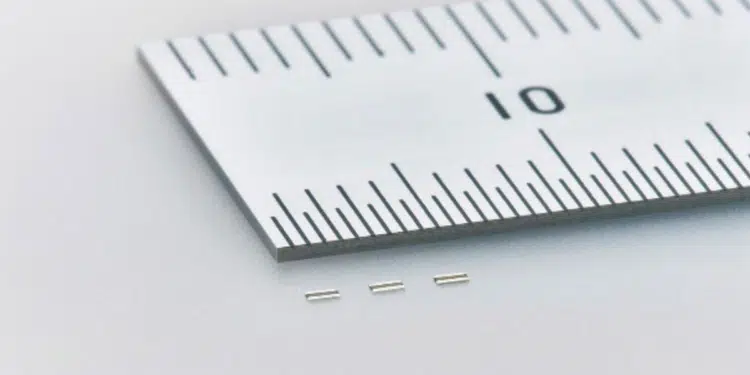TAIYO YUDEN CO., LTD. announced today the commercialization of the low-profile multilayer ceramic capacitors AWK105 BJ474MN and PWK105 C6474MN (both 0.52 x 1.0 x 0.1 mm, maximum height).
These multilayer ceramic capacitors are ideal for devices that are required to be thin, such as smartphones and wearables, for decoupling the IC power supply lines inside the devices. They have achieved not only a low ESL thanks to the external electrodes placed lengthwise but also a capacitance of 0.47 μF, about twice the capacity of our conventional capacitor AWK105 BJ224MN (with the same dimensions and a capacitance of 0.22 μF).
The products are suitable for decoupling ICs in smartphones that have become faster and more sophisticated in line with the progress of 5G services. Production of the multilayer ceramic capacitors will commence at the company’s Tamamura Plant (Tamamura-machi, Sawa-gun, Gunma Prefecture, Japan) in June 2021, with a reference price of 10 yen per unit.
Technology Background
Multilayer ceramic capacitors are placed near IC devices mounted in a smartphone or wearable device for the purpose of decoupling. With the trend toward thinner devices, improved functionality, and larger battery size, the mounting area available for parts is shrinking. There is a need for increasing the mounting density, such as mounting low-profile parts at the back of the IC package, rather than the conventional method of mounting parts on the substrate. In addition, with the sophistication of smartphones in line with the start of 5G services, operating speeds of embedded ICs have been increasing. To ensure stable operation of these ICs, low-ESL decoupling capacitors need to be placed around them.
To address this market need, TAIYO YUDEN improved its conventional thin film technology and arranged the external electrodes lengthwise in the AWK105 BJ474MN and PWK105 C6474MN, which offer a low profile of 0.1 mm and low ESL, and have twice the capacitance of the company’s conventional capacitors.We will continue to actively develop low-profile multilayer ceramic capacitors to increase capacitance.
Applications
decoupling IC power supply lines in devices that are required to be thin, such as smartphones and wearables

































